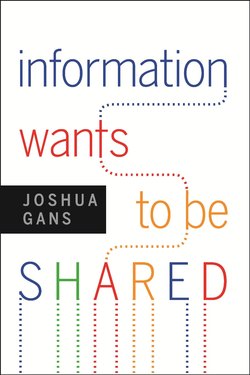Читать книгу Information Wants to Be Shared - Joshua Gans - Страница 11
На сайте Литреса книга снята с продажи.
Free and Business Models
ОглавлениеIn less than a decade since the introduction of the iTunes Music Store, music publishers have abandoned digital rights management (DRM) entirely. One of the features that Apple offered the music industry in 2003 was its FairPlay system, which made copying music difficult. If you purchased a song on iTunes, you could transfer it to any iPod in your household, but it was harder to transfer it between computers and certainly beyond, although you could burn songs to a CD and then reimport them, DRM free. The overall rationale here was that use would be limited, as much as possible, to the individuals who made a purchase, just as it would be with physical media where some copying was possible.
But consider consumers who legitimately purchased music. At some point, they would purchase a new computer and have to reauthorize their account. They would acquire new family members who they couldn’t transfer songs to. Simplicity would then turn to effort. [7] Thinking of the long term, some consumers might make investments to download music just to be free of the later hassles and annoyances caused by DRM. [8] Was DRM itself harming the very paying customers the music industry wanted to attract?
The answer is likely yes, precisely because music on iTunes is no longer shackled with DRM constraints. This migration happened as part of a compromise. Apple introduced a second pricing tier ($1.29) for songs without DRM and with a higher quality. Within a relatively short time, all the music on iTunes migrated to that form. Moreover, while the 30 percent price increase stuck in some cases, sometimes music publishers lowered prices. In 2011, Apple even offered iTunes Match, which allowed consumers who had not purchased music from iTunes (perhaps music they had downloaded illegally) to turn their collections into iTunes-quality versions.
These changes reflect a third viewpoint of “information wants to be free”: use. When consumers acquire information, they want to be free to use it in a form they choose. This might mean transferring music between computers, but it also may mean editing a song to use in a home movie. This also makes information (in this case, music) more valuable, which is why, when constraints were lifted, the price of music could increase.
This notion of free has important implications for the business models of information goods. From a consumer perspective, putting restrictions on the use of information increases the cost or decreases its value. Effectively, the producers are increasing the price without gaining any revenue. Indirectly, producers may be making piracy more costly, but, at the same time, these restrictions give consumers an incentive to avoid monetary payment if only to also avoid the hassle.
Any price or restriction that does not reflect a seller’s costs of getting the marginal unit to market causes a corresponding loss in value created—what economists refer to as a deadweight loss. A deadweight loss occurs when a seller, in order to extract more from some consumers, either prices to exclude other consumers or to reduce overall use of the product. When the seller genuinely incurs costs, prices can play a role in getting consumers to share in the efforts to economize on those costs. However, for information goods, digitization reduces the need for such economizing and, correspondingly, increases the size and potential for deadweight losses.
Traditional information businesses, when confronted with digital distribution, tend to start by replicating the same restrictions that consumers face in a physical world. They institute a system that maximizes deadweight losses. Instead, the “freedom to use” perspective suggests that sellers of information goods ought to start by envisaging their business as one where products are offered to consumers without restrictions on use—either through pricing or otherwise. Can they make a world without deadweight losses work? If they can, those consumers will pay for it, just as they paid more for digital music without DRM. And if this is the case, then far from being free, in terms of price, information wants something more.
